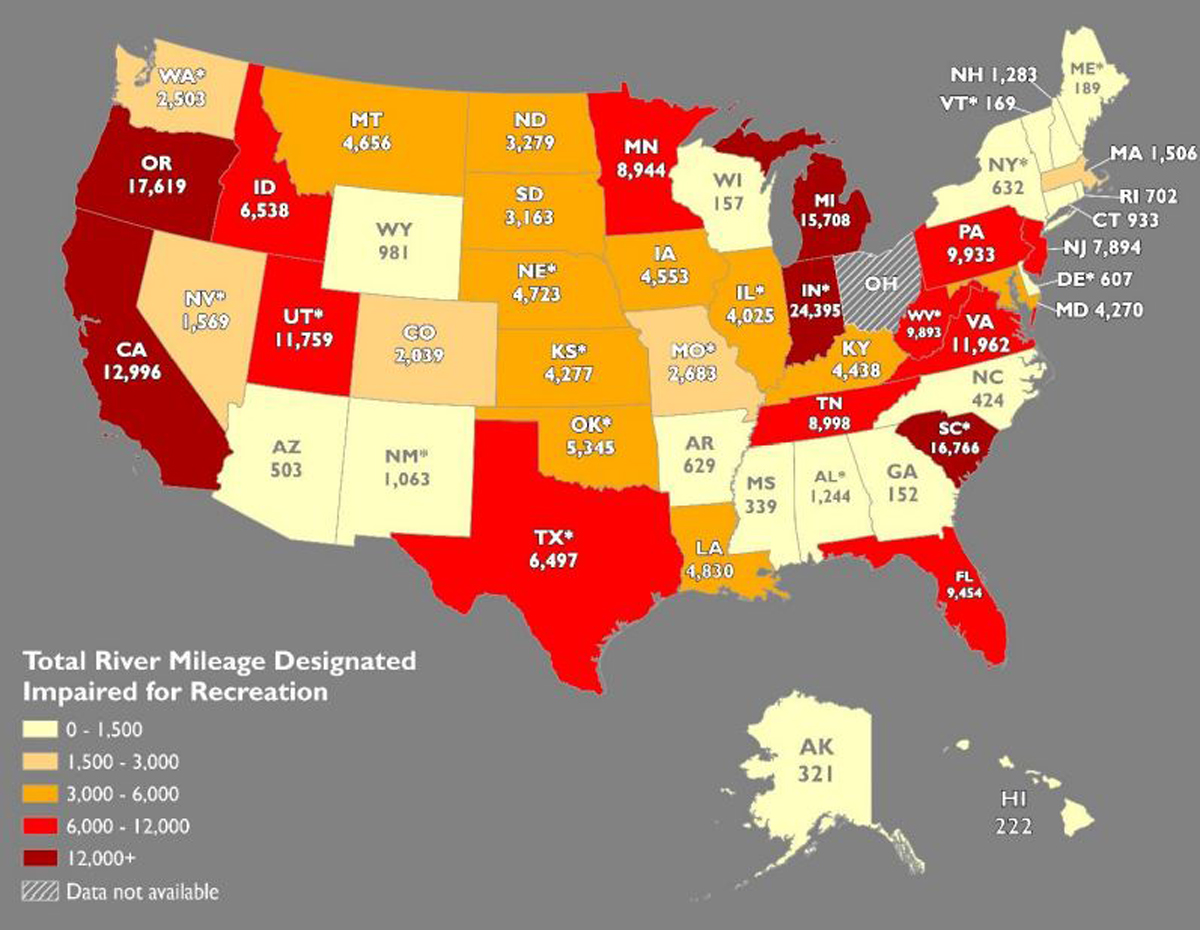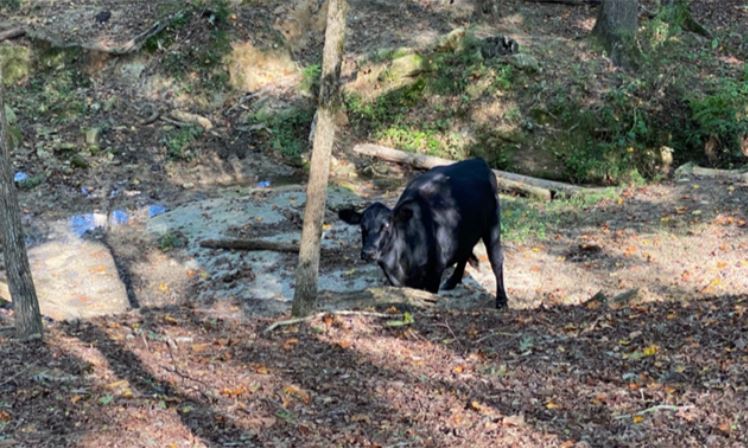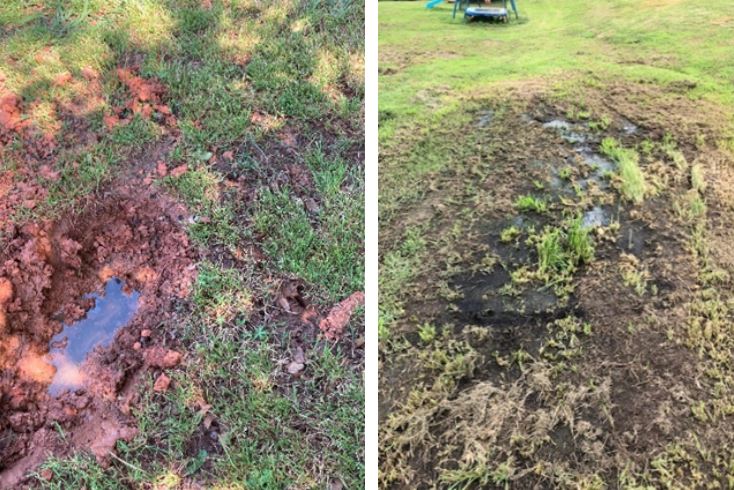We're hiring: Land Stewardship Specialist
This full-time position plays an integral role in our Stewardship and Land Management team by conducting annual monitoring visits to properties protected by conservation easements, interfacing with landowners, compiling reports, and more.
The Water Log: National Water Quality Month
August 17th, 2022
By Erika Hollis
August is National Water Quality Month! At Upstate Forever, protecting water quality drives the work we do because it is so vitally important to our individual health, community needs, and the natural environment.
Read on to learn more about the history of Clean Water Month, valuable information on the status of our local waters, and ways that you can protect water quality at home.
Stay cool and thank you for keeping our waters clean,

Erika Hollis
Clean Water Director
Upstate Forever
The Purpose of Water Quality Month
While every month is water quality month for our Clean Water team, we are excited to share the importance of this nationally recognized celebration with you. Imagine what your life would be like without easy access to clean water. You would not be able to turn on the tap in your house to quench your thirst on a hot afternoon. You would not be able to take a shower or bath. There would be no pools, lakes, or rivers clean enough for recreation. In short, our lives would be unrecognizable, and not for the better.
While National Water quality month reminds us to take pause and consider the importance of water sources for human use, it also reminds us to recognize the importance of water to other inhabitants of these ecosystems. Whether it is the fish that live within the waters or the plants and animals whose lives depend on lakes and rivers, everyone in an ecosystem requires access to clean water just as we humans do.
By taking the time to consider the importance of clean water and the small behaviors that add up to protecting (or hurting) water quality, you are one step closer to making a difference.
History of Water Quality Month
National Water Quality Month got its start back in the early 1970s when two important congressional acts were passed to protect our nation’s critical water resources. In 1972, the Clean Water Act was passed, marking the start of the federal government’s involvement in curbing water pollution. The Act made it illegal to dump excessive amounts of toxic materials into water bodies. This was followed in 1974 with the Safe Drinking Water Act, which was passed to further protect the quality of surface and ground water for public water systems.
National Water Quality Month was then founded in 2005 by the Environmental Protection Agency (EPA) and the United Nations to promote civic engagement in conserving water resources. The key component of this movement was to start conversations within our own households and communities to ensure that we all continue to have access to clean, safe water today and for future generations.
Why Water Quality is Truly Vital
There are a limited number of water sources available to the population, and we have yet to discover a way to manufacture water. Therefore, it is essential to protect these water sources since virtually everything on our planet relies on them. Unfortunately, high quality, unpolluted water is consistently taken for granted because most of us only need to turn on our tap to access clean water. This access is especially taken for granted by developed countries like the U.S. who have the luxury of easy access to clean water for consumption and recreation.
According to the National Parks Conservation Association, out of the “207 of our 397 national parks, 52%, have waterways that are considered ‘impaired’ under the Clean Water Act, meaning they do not meet appropriate water quality standards.” Even in the most protected natural areas in the country, more than half suffer from poor water quality.
Additionally, as mentioned in the April Water Log, according to the most recent data, over half of the nation’s river and stream miles and lake acres are so polluted that they are classified as “impaired” — meaning these waters have enough pollution that they don’t meet standards for swimming and recreation, aquatic life, fish consumption, or as drinking water resources. Moreover, in 2018, SC ranked third in the nation for the dirtiest waterways at 16,766 miles of contaminated water.

Sources of Poor Water Quality
Bacteria, nutrients (nitrogen and phosphorus), and sediment are all pollutants of concern, especially in watersheds with drinking water intakes. Elevated levels of these pollutants can negatively affect water quality by impacting aquatic habitats, filling in lakes, causing increased (and more costly) water-treatment, and posing a risk to human health through water-based recreation.
Here is some information that may be helpful:
- Flooding: Damage to public and private property
- Eroded Stream banks: Sediment clogs waterways, fills lakes, reservoirs, kills fish and aquatic animals
- Widened Stream Channels: Loss of value of property
- Aesthetics: Dirty water, trash and debris, foul odors
- Fish and Aquatic life: Impaired and destroyed
- Impaired Recreational Uses: Swimming, fishing, and boating
- Threatens Public Health: Contamination of drinking water, fish/shellfish
- Economic Impacts: Impairments to fishers, shellfish, tourism, recreation-related businesses
- Increased Cost of Water and Wastewater Treatment: Stormwater pollution increases raw water treatment costs and reduces the assimilative capacity of waterbodies.
The Clean Water Team at UF deals with these pollution types with our 319 implementation work. To get more information about 319 implementation and watershed-based plans, read back on the March Water Log! Read on to learn more about what common practices contribute to these pollutants reaching our waterways.
- Bacterial Pollution:
- Failing septic tanks
- Cattle and other livestock in streams
- Stormwater runoff
- Domestic pet waste
- Wildlife like waterfowl, wild hogs, deer, and beavers

Cattle in a stream in the Lake Greenwood watersheds
2. Sediment Pollution:
- Croplands and livestock operations
- Urban and road construction
- Clear cutting and other types of forestry
- Stormwater runoff

Examples of sedimentation in the Lake Greenwood watersheds (left) and clear cutting in the Twelvemile Creek Watershed (right)
3. Nutrient Pollution:
- Livestock in waterways
- Application of fertilizers that get washed away during rain events
- Soil erosion
- Stormwater and pet waste
- Failing septic systems
- Wastewater treatment plants and other factories discharge effluents

Failing septic systems in the Three & Twenty Creek Watershed
How You Can Help
Fortunately, we still have time and many different methods to keep our water clean. Protecting our precious water resources starts with individual mindsets and taking personal responsibility for the effects our activities may have on our environment.
Read the items below to get an idea of what you can do to help, and what local organizations you can support in their pursuit of water quality protection.
- Support Upstate Forever’s work writing watershed-based plans (WBPs) and Section 319 grant projects. We are currently working in the Twelvemile Watershed to create a WBP with our partners at the Clemson University Center for Watershed Excellence. If you live within this watershed, please consider filling out our Twelvemile Watershed Water Quality Survey. Secondly, we are still working to implement best management practices (BMPs) such as septic tank repairs, agricultural projects, and land protection in the Tyger River and Three & Twenty Creek watersheds. For more information about these projects, visit our 319 informational page.
- Participate in stream cleanups with organizations like Friends of the Reedy River. For more information on volunteer opportunities, including stream cleanups and citizen water quality monitoring, click HERE.
- Plant trees to prevent soil erosion. As mentioned above, sediment is the most common pollutant in our nation’s waterways and preventing soil erosion is one of the best ways to mitigate this problem. Trees are one of the most natural methods to maintain healthy soil and prevent erosion because of their expansive root systems, large canopies, and transpiration (the evaporation of water from most plants) processes. To learn more about the importance of maintaining tree canopy in the Upstate and to help plant more trees visit Trees Upstate.
- Monitor a local waterway by being trained and participating with SC Adopt-A-Stream (AAS). Citizen-driven water quality monitoring helps state organizations and enforcement entities identify problems with water quality, and helps you ensure the water closest to you is healthy for your preferred use. For more information about being trained and/or getting involved, visit the AAS website!
Until next time
Thanks for joining us for The Water Log, Upstate Forever's periodic newsletter dedicated to clean water issues and advocacy!
If you would like to receive The Water Log in your inbox or know someone who might like to receive this newsletter as an email, please send them to this link to sign up: upstateforever.org/email
Have clean water questions or comments? Contact me at ehollis@upstateforever.org.

